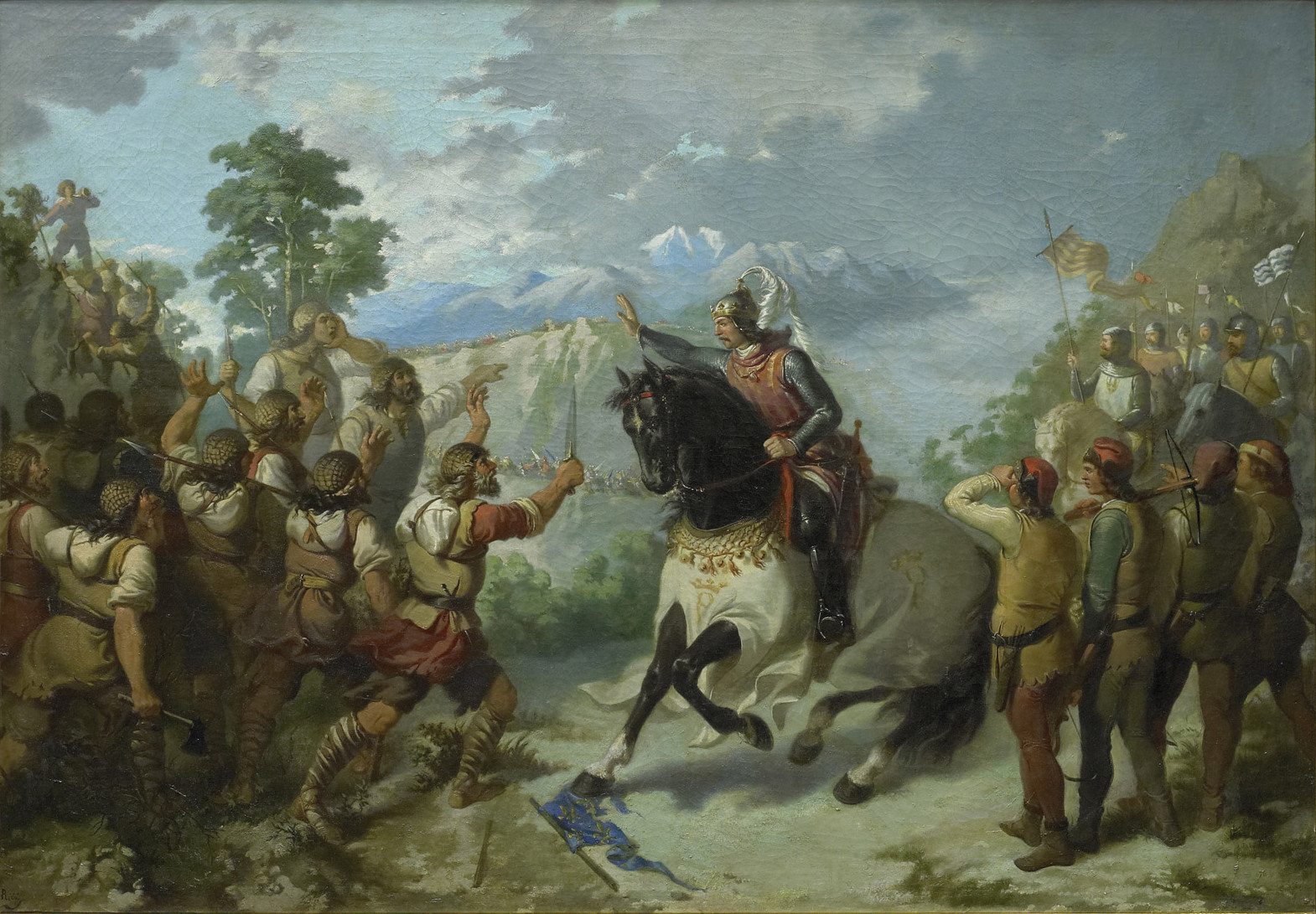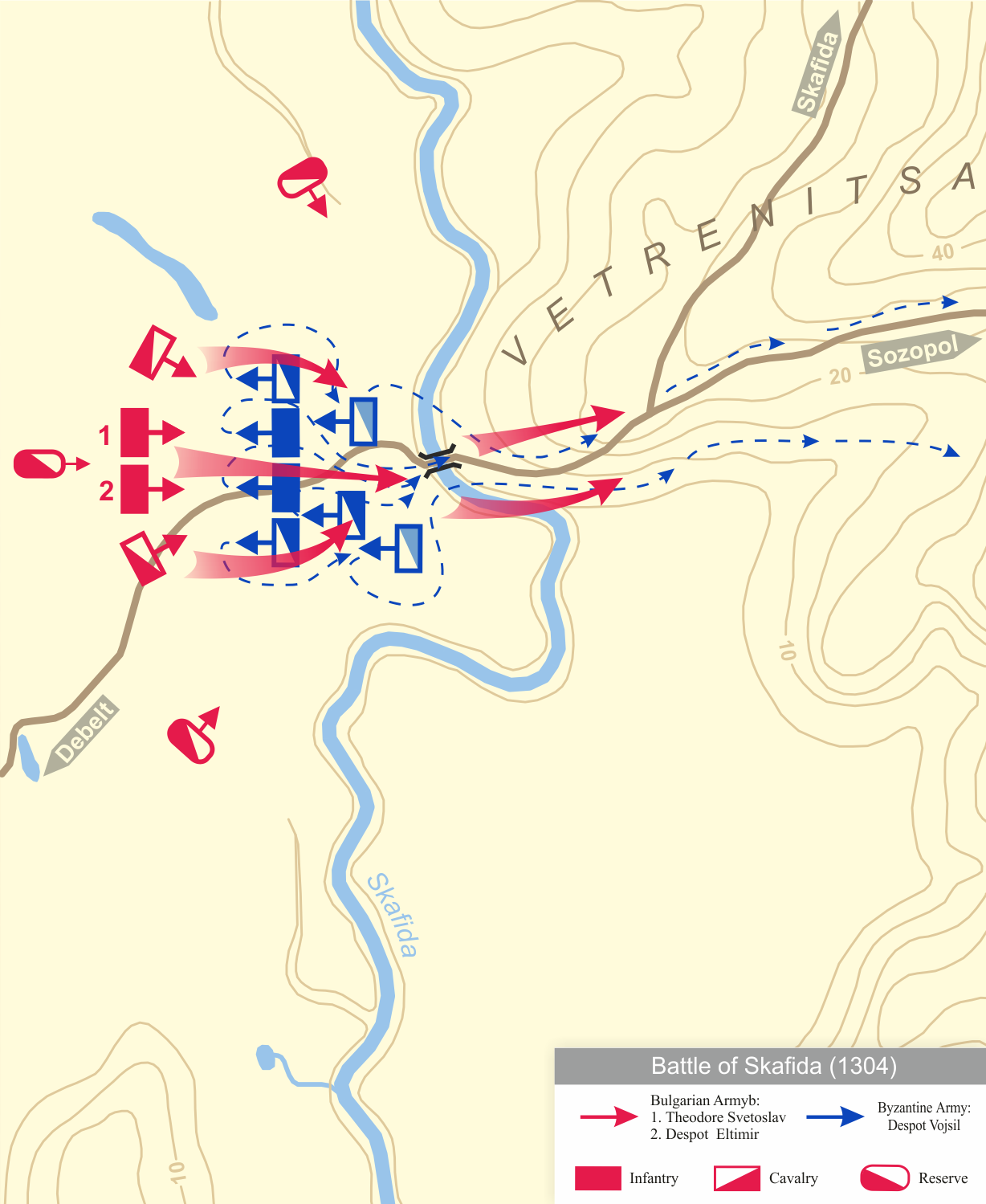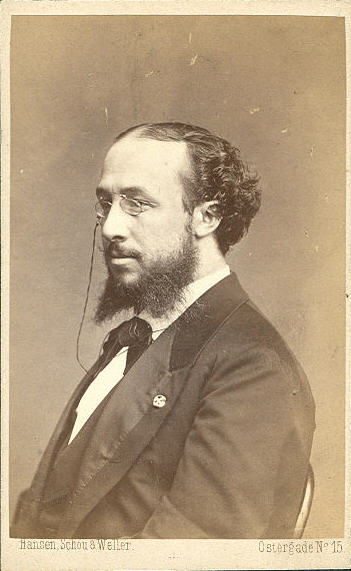|
Roger De Flor (opera)
''Roger de Flor'' is an opera (''drama lírico'') in three acts by Ruperto Chapí for libretto by Mariano Capdepón. It is the third of the three operas composed by Chapí during his studies in Paris and Italy. It was staged for the first time at the Teatro Real in Madrid on 23 January 1878. The first modern performance was on 10 March 2012 in Palau de la Música de València in a concert performance. Background and performance history Before ''Roger de Flor'', only seven works by Spanish composers were staged at the Teatro Real, two of which were 1-act operas by Chapí. The new composition was presented during the wedding fests of Alfonso XII and Mercedes of Orléans. The first performance took place on the very day of the wedding, but was incomplete (only two acts). It had to correspond to the time of the wedding ceremony, and there were also artistical problems. The first complete performance took place some days later, on 22 February, the anniversary of the First Spanish R ... [...More Info...] [...Related Items...] OR: [Wikipedia] [Google] [Baidu] |
Ruperto Chapí
Ruperto Chapí y Lorente (27 March 1851 – 25 March 1909) was a Spanish composer, and co-founder of the Spanish Society of Authors and Publishers. Biography Chapí was born at Villena, the son of a Valencian barber. He trained in his home town and in Madrid. He wrote many symphonic, band, choral and chamber works, as well as '' zarzuelas'' and operas, becoming, alongside Tomás Bretón, a fellow pupil of Emilio Arrieta at the Madrid Conservatory. He was one of the most popular and important composers of his time. He wrote zarzuelas in all shapes and sizes, including the three-act ''zarzuela grande'' and the one-act ''género chico'' forms. His most celebrated work is '' La revoltosa'', written in the latter style. Many of the preludes to his ''zarzuela''s (including those to ''El tambor de granaderos'' and ''La patria chica'') have remained staple items in Spanish orchestral concerts. He died in Madrid in 1909. Symphonic works * ''Sinfonía en Re'' (Symphony in D) (by 1879 ... [...More Info...] [...Related Items...] OR: [Wikipedia] [Google] [Baidu] |
Roger De Flor
Roger de Flor (1267 – 30 April 1305), also known as Ruggero/Ruggiero da Fiore or Rutger von Blum or Ruggero Flores, was an Italian military adventurer and condottiere active in Aragonese Sicily, Italy, and the Byzantine Empire. He was the commander of the Great Catalan Company and held the title Count of Malta. Biography Roger de Flor was born in Brindisi in the Kingdom of Sicily, the second son of an Italian noblewoman of Brindisi and a German falconer named Richard von Blum (''Blume'' means flower in German) in the service of Emperor Frederick II. Richard von Blum was killed fighting at the Battle of Tagliacozzo in 1268. At eight years old Roger de Flor was sent to sea in a galley belonging to the Knights Templars. He entered the order and became captain of a galley called "El falcó". After rescuing wealthy survivors during the siege of Acre by the Mamluk Sultan Al-Ashraf Khalil in 1291, he went to Cyprus. Following intrigues and personal disputes he was accused of ... [...More Info...] [...Related Items...] OR: [Wikipedia] [Google] [Baidu] |
Catalan Company
The Catalan Company or the Great Catalan Company (Spanish: ''Compañía Catalana'', Catalan: ''Gran Companyia Catalana'', Latin: ''Exercitus francorum'', ''Societas exercitus catalanorum'', ''Societas cathalanorum'', ''Magna Societas Catalanorum'') was a company of mercenaries led by Roger de Flor in the early 14th century and hired by the Byzantine Emperor Andronikos II Palaiologos to combat the increasing power of the Anatolian beyliks. It was formed by '' almogavar'' veterans of the War of the Sicilian Vespers, who had remained unemployed after the signing in 1302 of the Peace of Caltabellotta between the Crown of Aragon and the French dynasty of the Angevins. Origin The military demands of the Reconquista stimulated the formation of the elite light infantry known as the ''almogavars'' on the Iberian peninsula during the 13th century. These troops were used quite effectively by the Crown of Aragon for other imperial ventures in the Mediterranean, particularly the War of the ... [...More Info...] [...Related Items...] OR: [Wikipedia] [Google] [Baidu] |
Enrico Tamberlick Portrait
Enrico is both an Italian masculine given name and a surname, Enrico means homeowner, or king, derived from ''Heinrich'' of Germanic origin. It is also a given name in Ladino. Equivalents in other languages are Henry (English), Henri ( French), Enrique (Spanish), Henrique (Portuguese) and Hendrik (Dutch). Notable people with the name include: Given name * Enrico Albertosi (born 1939), Italian former football goalkeeper * Enrico Alfonso (born 1988), Italian football player * Enrico Alvino (1808–1872), Italian architect and urban designer * Enrico Annoni (born 1966), retired Italian professional footballer * Enrico Arrigoni (1894–1986), Italian individualist anarchist * Enrico Baj (1924–2003), Italian artist and art writer * Enrico Banducci (1922–2007), American impresario * Enrico Barone (1859–1924), Italian economist * Enrico Berlinguer (1923–1984), Italian politician * Enrico Bertaggia (born 1964), Italian former racing driver * Enrico Betti (1823–1892), Italian mat ... [...More Info...] [...Related Items...] OR: [Wikipedia] [Google] [Baidu] |
Andronikos II Palaiologos
, image = Andronikos II Palaiologos2.jpg , caption = Miniature from the manuscript of George Pachymeres' ''Historia'' , succession = Byzantine emperor , reign = 11 December 1282 –24 May 1328 , coronation = 8 November 1272 , cor-type1 = Coronation , regent = Michael IX Palaiologos , reg-type = Co-emperor , predecessor = Michael VIII Palaiologos (alone) , successor = Andronikos III Palaiologos , spouse = Anna of HungaryYolande of Montferrat , issue = Michael IX PalaiologosConstantine Palaiologos John PalaiologosTheodore I, Marquis of MontferratDemetrios Palaiologos Simonis (Simonida Nemanjić), Queen of SerbiaIrene Palaiologina (wife of John II Doukas), Sebastokratorissa of Thessaly , issue-link = #Family , issue-pipe = more... , dynasty = Palaiologos , father = Michael VIII Palaiologos , mother = Theodora Palaiologina , birth_date = 25 March 1259 , birth_place = Nicaea, Empire of Nicaea( ... [...More Info...] [...Related Items...] OR: [Wikipedia] [Google] [Baidu] |
Stefano Palatchi
Stefano Palatchi Ribera (born 26 March 1960), known publicly as Stefano Palatchi, is a Spanish opera singer who has sung leading bass roles in Spain and internationally and is noted for stage skills, timbre. and expressiveness. His concert repertoire includes Mozart's ''Requiem'' and Verdi's ''Messa da Requiem'' which he has sung many times. Biography Background Palatchi was born in Barcelona. His mother had studied under Conchita Badía, teacher of Montserrat Caballe. Palatchi himself had started to study singing at age 15 under Maya Maiska. He began singing ''zarzuela'' and then opera: Un día, mientras estaba tomando clase con el maestro Puig, llegó Luis Andreu Marfà, entonces director artístico del Liceo, y me oyó cantar. Le gusté y me propuso interpretar un pequeño papel en ''Lohengrin'' de Wagner. Ese fue mi debut.One day, as I was taking class with my teacher Puig, in came Luis Andreu Marfà, then artistic director of the Liceu, and he heard me sing. He li ... [...More Info...] [...Related Items...] OR: [Wikipedia] [Google] [Baidu] |
Romano Nannetti
Romano may refer to: Food * Pecorino Romano, a hard, salty Italian cheese * Romano cheese, an American English and Canadian English term for a class of cheeses Places Italy Municipalities in the Metropolitan City of Rome, Latium * Arcinazzo Romano * Barbarano Romano * Castel San Pietro Romano * Cineto Romano * Magliano Romano * Mazzano Romano * Monte Romano * Montorio Romano * Olevano Romano * Ponzano Romano * Sant'Angelo Romano Municipalities in the Metropolitan City of Rome, Lazio * Bassano Romano * Carpineto Romano * Fiano Romano * San Vito Romano * Trevignano Romano * Vivaro Romano Other places in Italy * Romano Canavese, a municipality in Turin, Piedmont * Romano d'Ezzelino, a small city in Veneto * Romano di Lombardia, a municipality in Bergamo, Lombardy * San Romano in Garfagnana, a municipality in Lucca, Tuscany Other places * Cape Romano, a cape on the Gulf Coast of Florida, U.S. * Cayo Romano, an island on the northern coast of Cuba Structures * Acquario Roma ... [...More Info...] [...Related Items...] OR: [Wikipedia] [Google] [Baidu] |
Bass (voice Type)
A bass is a type of classical male singing voice and has the lowest vocal range of all voice types. According to ''The New Grove Dictionary of Opera'', a bass is typically classified as having a vocal range extending from around the second E below middle C to the E above middle C (i.e., E2–E4).; ''The Oxford Dictionary of Music'' gives E2–E4/F4 Its tessitura, or comfortable range, is normally defined by the outermost lines of the bass clef. Categories of bass voices vary according to national style and classification system. Italians favour subdividing basses into the ''basso cantante'' (singing bass), ''basso buffo'' ("funny" bass), or the dramatic ''basso profondo'' (low bass). The American system identifies the bass-baritone, comic bass, lyric bass, and dramatic bass. The German ''Fach'' system offers further distinctions: Spielbass (Bassbuffo), Schwerer Spielbass (Schwerer Bassbuffo), Charakterbass (Bassbariton), and Seriöser Bass. These classification systems can ... [...More Info...] [...Related Items...] OR: [Wikipedia] [Google] [Baidu] |
Byzantine Empire
The Byzantine Empire, also referred to as the Eastern Roman Empire or Byzantium, was the continuation of the Roman Empire primarily in its eastern provinces during Late Antiquity and the Middle Ages, when its capital city was Constantinople. It survived the fragmentation and fall of the Western Roman Empire in the 5th century AD and continued to exist for an additional thousand years until the fall of Constantinople to the Ottoman Empire in 1453. During most of its existence, the empire remained the most powerful economic, cultural, and military force in Europe. The terms "Byzantine Empire" and "Eastern Roman Empire" were coined after the end of the realm; its citizens continued to refer to their empire as the Roman Empire, and to themselves as Romans—a term which Greeks continued to use for themselves into Ottoman times. Although the Roman state continued and its traditions were maintained, modern historians prefer to differentiate the Byzantine Empire from Ancient Rome ... [...More Info...] [...Related Items...] OR: [Wikipedia] [Google] [Baidu] |
Michael IX Palaiologos
, image = 154 - Michael IX Palaiologos (Mutinensis - color).png , caption = 15th-century portrait of Michael IX (from a 15th-century codex containing a copy of the ''Extracts of History'' by Joannes Zonaras) , succession = Byzantine emperor , reign = 21 May 1294 –12 October 1320 , coronation = 21 May 1294, Hagia Sophia , regent = Andronikos II Palaiologos , reg-type = Co-emperor , predecessor = Andronikos II (alone) , successor = Andronikos II (alone), Andronikos III ( in Macedonia) , spouse = , issue = , dynasty = Palaiologos , father = Andronikos II Palaiologos , mother = Anna of Hungary , birth_date = 17 April 1277 , birth_place = Constantinople(now Istanbul, Turkey) , death_date = , death_place = Thessaloniki, Greece , place of burial = , , title=Emperor and Autocrat of the Romans Michael IX Palaiologos or Palaeologus ( el, Μιχαήλ Δού ... [...More Info...] [...Related Items...] OR: [Wikipedia] [Google] [Baidu] |
Mariano Padilla Y Ramos
Francisco de Asís Mariano del Carmen Marco Padilla y Ramos; 18 July 1843 – 21 November 1906), known as Mariano Padilla y Ramos, was a Spanish operatic baritone who excelled in the title role of Mozart's ''Don Giovanni''. Biography Padilla was born in Murcia, the son of city attorney Antonio Marco Padilla and Manuela Ramos Alba from Beniel. He had five brothers. He studied under Teodulo Mabellini in Florence and appeared in many European countries, including England, where he sang in Giacomo Meyerbeer's ''Dinorah'' in 1881. He appeared at Covent Garden in 1887. He appeared in Prague that year in the centenary performance of ''Don Giovanni''. He is perhaps best remembered as the man whom the Belgian soprano Désirée Artôt married, to the great surprise of her unofficial fiancé, Pyotr Ilyich Tchaikovsky. Artôt had been performing in Russia in 1868, where she met and fell in love with Tchaikovsky. Her feelings were reciprocated, and they discussed marriage, although ... [...More Info...] [...Related Items...] OR: [Wikipedia] [Google] [Baidu] |
Baritone
A baritone is a type of classical male singing voice whose vocal range lies between the bass and the tenor voice-types. The term originates from the Greek (), meaning "heavy sounding". Composers typically write music for this voice in the range from the second F below middle C to the F above middle C (i.e. F2–F4) in choral music, and from the second A below middle C to the A above middle C (A2 to A4) in operatic music, but the range can extend at either end. Subtypes of baritone include the baryton-Martin baritone (light baritone), lyric baritone, ''Kavalierbariton'', Verdi baritone, dramatic baritone, ''baryton-noble'' baritone, and the bass-baritone. History The first use of the term "baritone" emerged as ''baritonans'', late in the 15th century, usually in French sacred polyphonic music. At this early stage it was frequently used as the lowest of the voices (including the bass), but in 17th-century Italy the term was all-encompassing and used to describe the averag ... [...More Info...] [...Related Items...] OR: [Wikipedia] [Google] [Baidu] |






